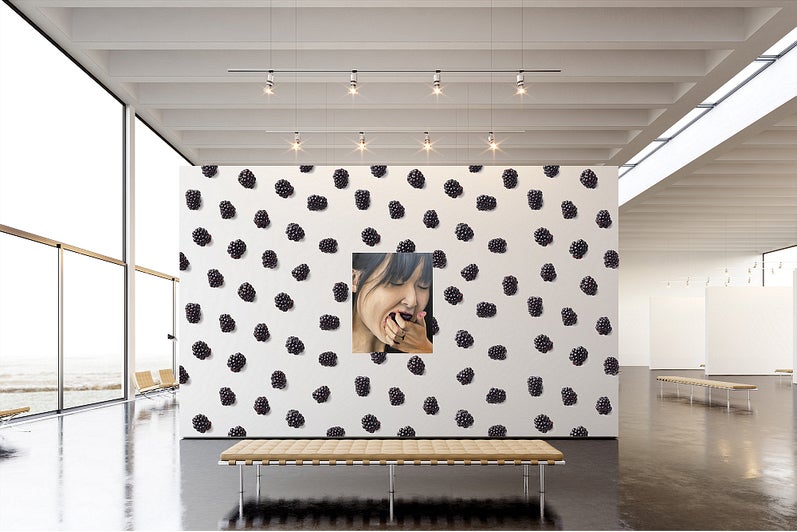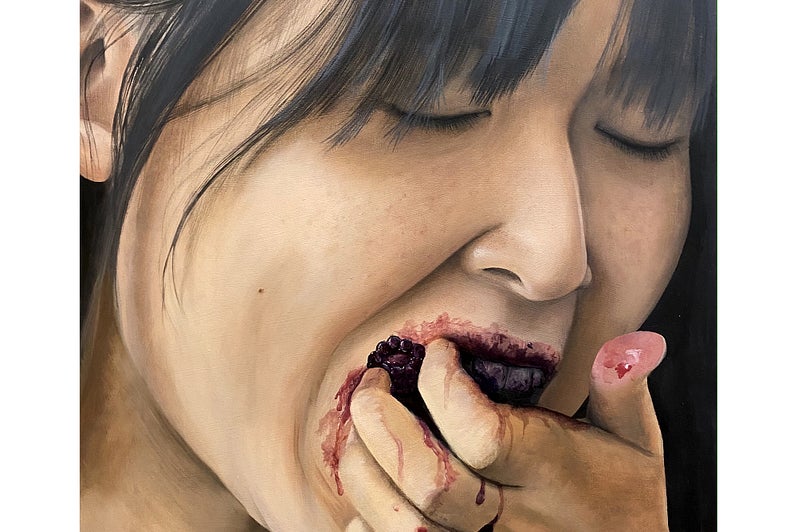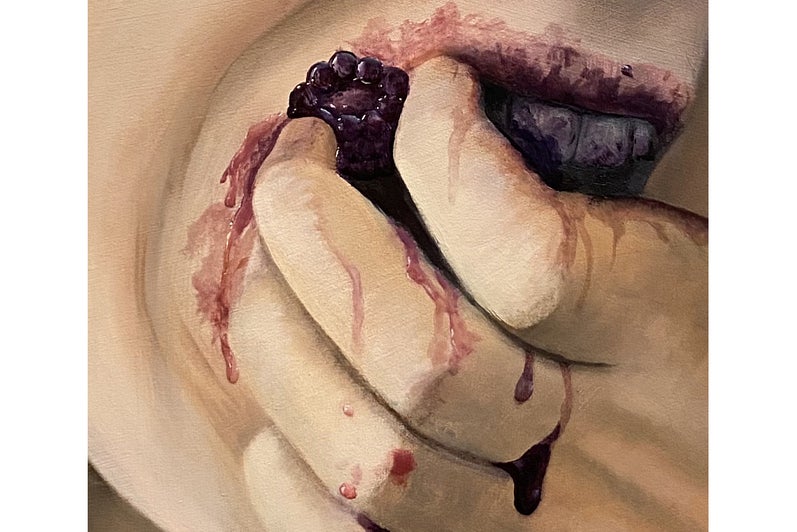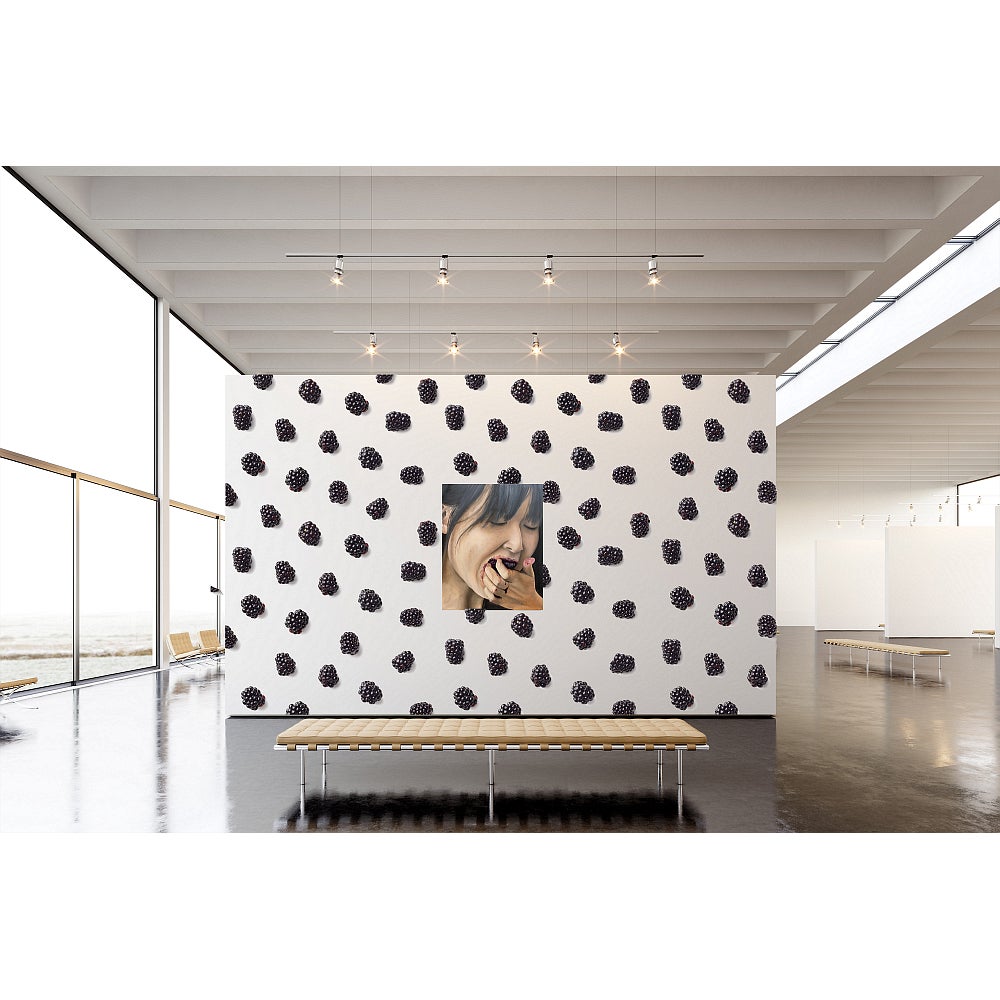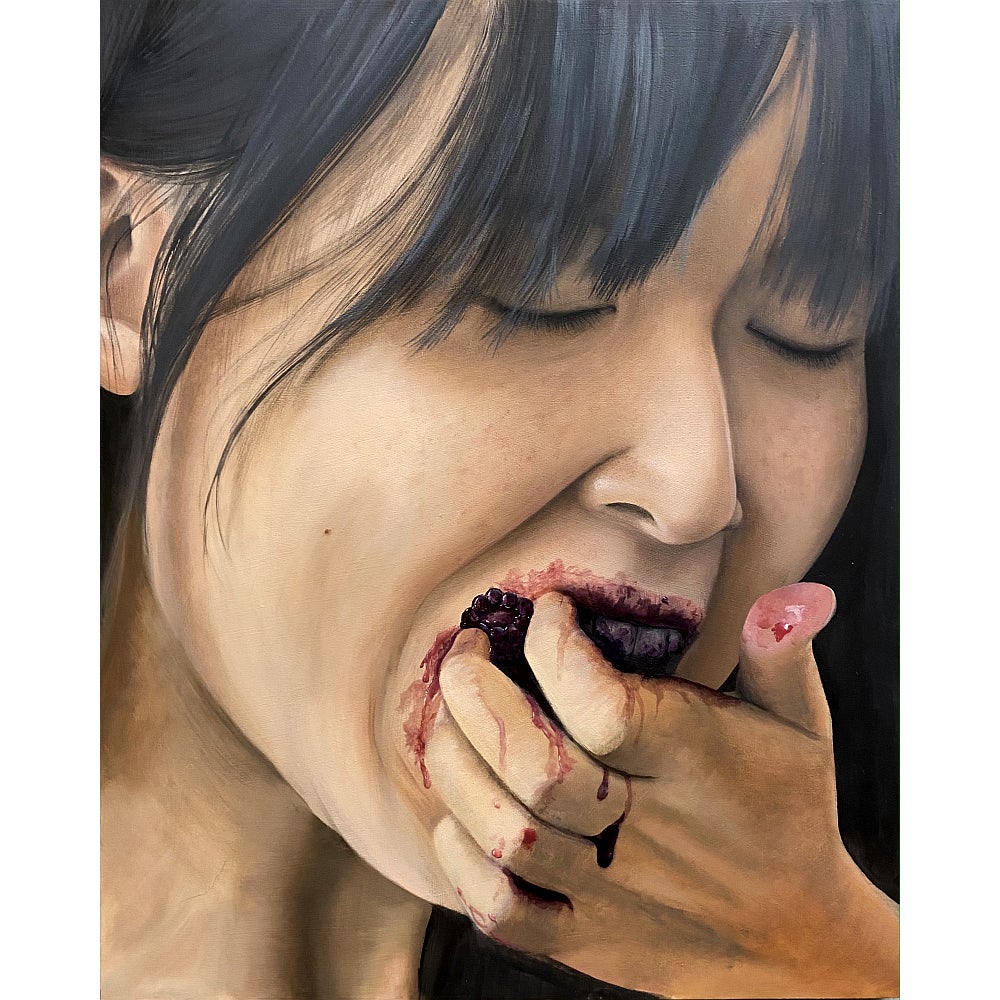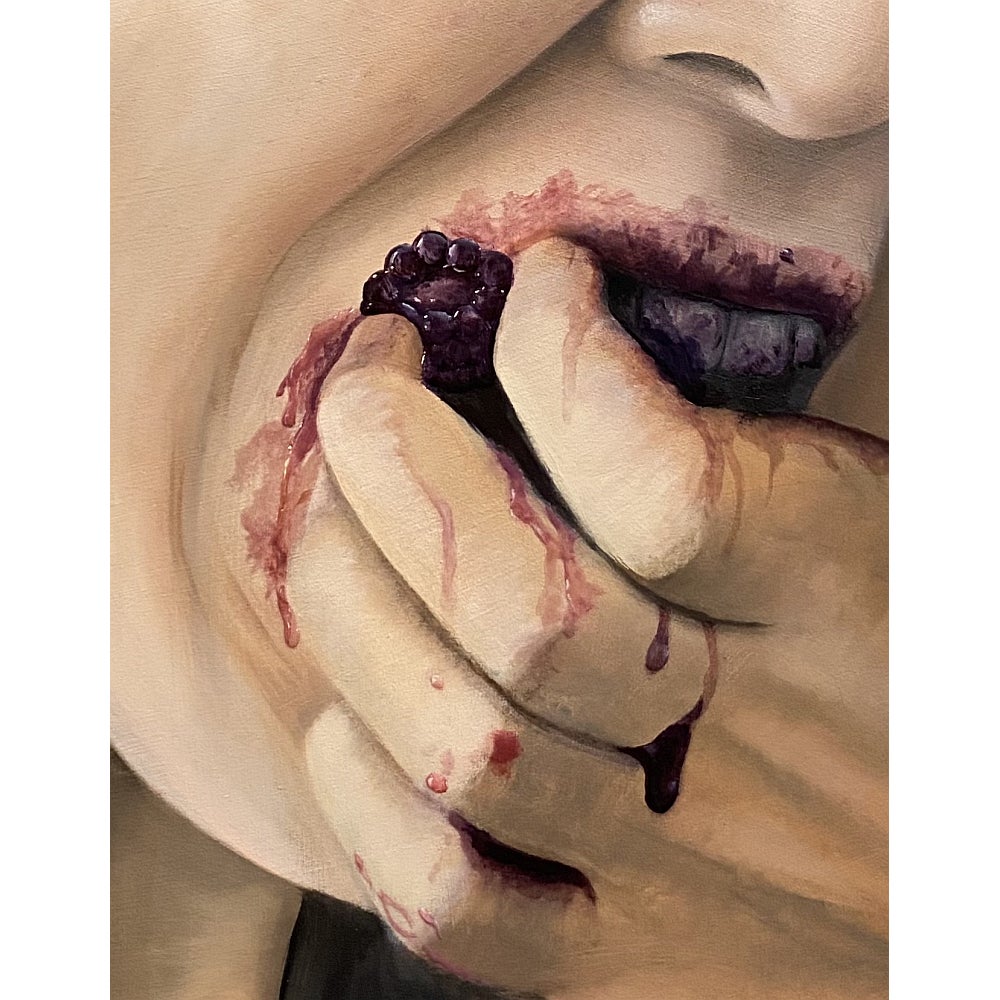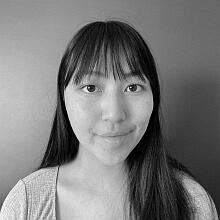
Instagram: _victoriashi and _victoriashiart
Victoria Shi is a Chinese Canadian student at the University of Waterloo. Born and raised in Toronto, she frequently centres her art around the female form, focusing on cultural identity and the social perception of femininity and womanhood. Her paintings often take on elements of sculpture—for example, incorporating layers of resin to achieve a variety of textures and the appearance of depth. She now lives in Waterloo where she studies Knowledge Integration and Fine Arts.
Artist Statement
Fruit is something that has long been considered a strong representation for the female body. In addition to some vague anatomical similarities suggesting sex and genitalia, the comparisons between fruit and femininity extend far beyond physicality. Socially upheld beliefs connote the two with specific descriptors – sweet, fertile, and consumable, for example. Divine uses this association as a means to subvert the male gaze and the harmful stereotyped image of the female body and femininity. The fetishized Asian female form consuming the fruit suggests freeing the ‘self’ and the conquering of external constraints.
Rather than a sensuous visual experience, Divine rejects expectations and is instead far more visceral, ravenous, and powerful. The juice and flesh of the berries are layered with resin to incorporate 3-dimensionality into the piece while also highlighting the abject. The work is also shown mounted on a wall covered in blackberry wallpaper, sardonically referencing the idea of the stereotyped ‘woman’ by emphasizing the imagery of fruit, and inserting home décor elements and pattern in a formal gallery space. This is also a dismantling of the ‘white cube’ in art, the modernist aesthetic devoid of alternate ways of knowing and intersectionality.
Interview
How have your lived experiences informed your artistic practice?
I
grew
up
in
Toronto
between
two
cultures,
as
the
daughter
of
Chinese
immigrants.
I
remember
being
torn
between
conflicting
messages
about
body
image
and
mental
health.
Menstruation,
in
particular,
is
something
that
I
struggled
with
quite
a
bit,
especially
in
adolescence.
Menstruation
seemed
full
of
paradoxes.
At
11
years
old,
I
was
being
told
that
I
was
a
child,
yet
I
had
suddenly
become
a
woman
at
the
same
time.
My
school
teachers
told
me
it
was
natural
and
nothing
to
be
ashamed
of,
but
I
was
terrified
my
classmates
could
tell
when
I
was
on
my
period.
My
friends
used
tampons
and
I
also
wanted
to,
but
I
was
told
by
family
that
they
were
only
for
women
“with
children”,
and
that
a
tampon
would
rob
me
of
my
virtue
and
innocence.
At
age
14,
a
Youtube
by
an
Asian
American
woman
speaking
about
her
experience
growing
up
with
the
same
kind
of
conflict
inspired
me
to
purchase
a
box
of
tampons
for
the
first
time.
Luckily,
I
had
been
menstruating,
because
hearing
about
her
experiences
validated
mine
so
intensely
that
I
ran
upstairs
and
immediately
‘Captain
Morgan-ed’
over
the
toilet
like
the
pamphlet
instructed
and
inserted.
I
had
never
felt
more
powerful.
I
immediately
told
my
mother
that
I
had
used
a
tampon,
and
her
worry
and
fear
were
apparent,
but
soon
replaced
by
unlearning
and
understanding.
The
feeling
of
learning
together
is
one
that
I
hope
to
replicate
through
my
artistic
practice,
removing
stigma
and
critiquing
the
taboo
surrounding
women’s
health
and
the
perception
of
women,
particularly
in
more
conservative
East
Asian
cultures.
Who are your greatest influences? What effect do they have on your thesis work?
Two artists who come to mind are Leng Jun and Mary Pratt. Both artists are extremely realistic painters with exceptional technique, but I find myself appreciating them for different reasons. The way Pratt utilizes light in her paintings to make mundane foods seem so transcendent and enticing, and I love Leng Jun’s hyper realistic portraits of women so much because he makes the conscious decision to paint the subject’s true likeness, including acne and scars. They also both bear similarities in subject matter with my thesis work, so I look to them often.
What is your usual artmaking process like? What are your preferred mediums?
My process begins with lots of sketches and reference photos. Sometimes, I like to write about ideas I have, leading to lots of incoherent notes peppered across various pages. After finding something that I am excited about, I take lots of reference photos to begin working from. From the photos, I’ll produce more sketches in different compositions, usually changing and refining the initial concept many times before settling on something more final. Then I move to painting. I draw a basic sketch before starting to paint. After that, I just keep painting until I’m satisfied or sufficiently exhausted. I mainly use acrylics for the fast drying time and versatility, especially its compatibility with epoxy resins, but I decided on oil paints for my thesis work for a change of pace.
